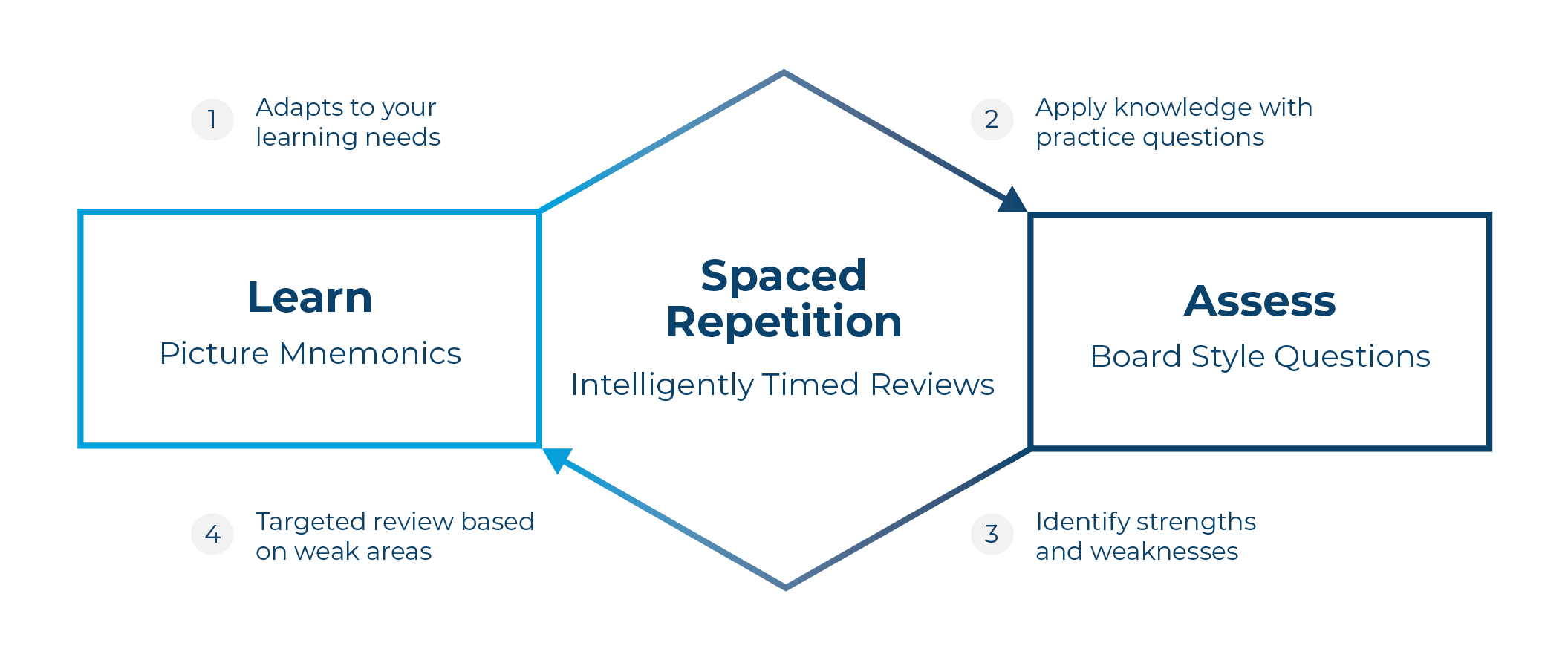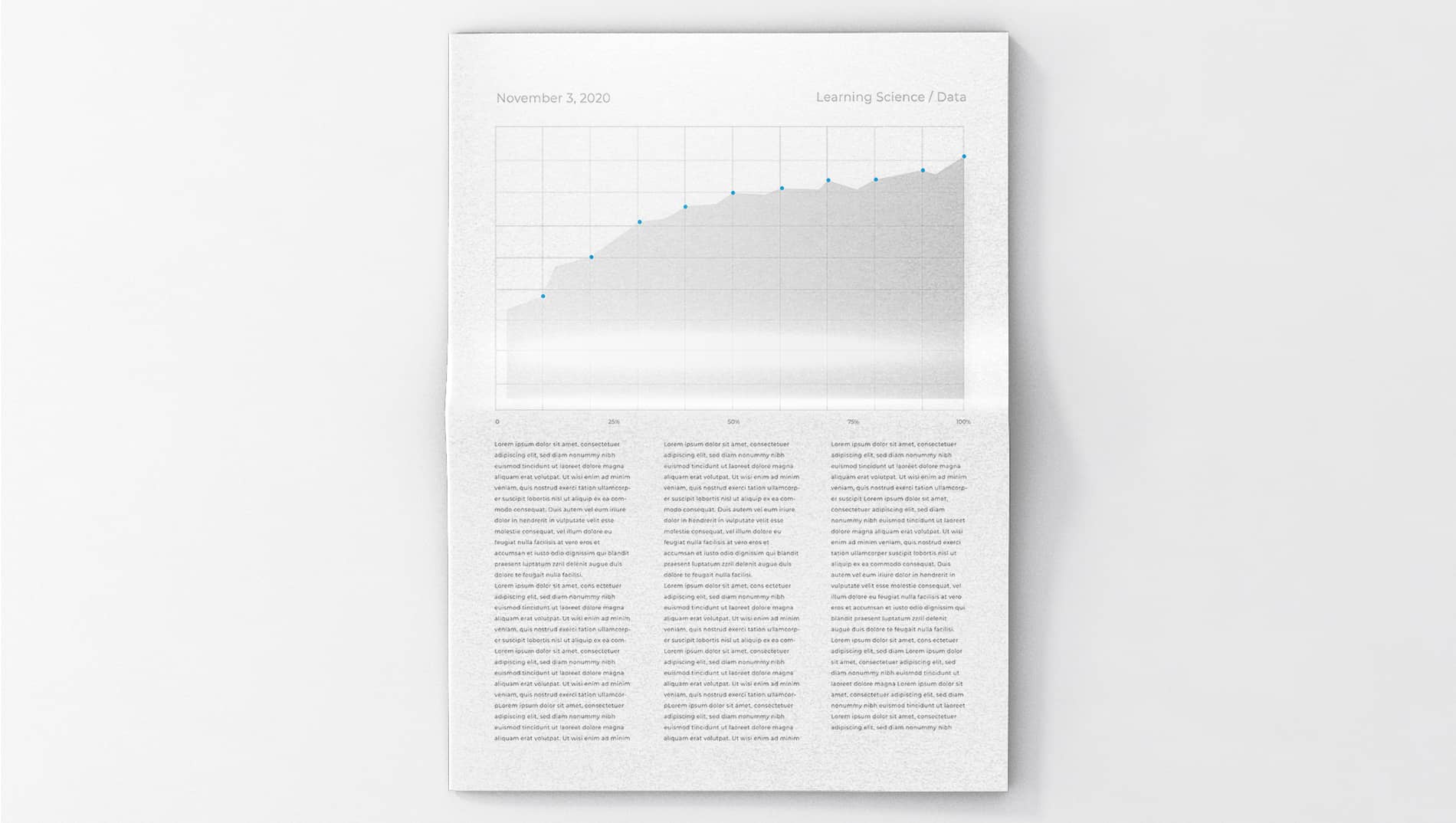Study for Exams Using Learning Loops by TrueLearn & Picmonic
Combining TrueLearn practice questions with Picmonic mnemonic videos is the key to increasing the effectiveness and focus of your exam prep. Zero in and build on weak areas as you prepare for coursework and high-stakes exams with the science-backed learning loop that adapts to what you need to learn.

What is a Learning Loop?
The concept of Loop Learning was proposed in the late 1970s by organizational behaviorist Chris Argyris and Donald Schön who believed that people are designers of action. They theorized that people are able to plan, implement, and review their actions in a continuous loop. Research has found that Loop Learning enhances knowledge acquisition by efficiently and effectively reviewing and adjusting through assessment.
Single and Double Loop Learning are the most commonly referenced learning dynamics within the literature. A Single Learning Loop is usually compared to how a thermostat functions. A thermostat automatically cools or heats the room as it continuously takes the temperature and compares it to the desired temperature.

A Double Learning Loop would be similar to a “smart thermostat” where it explores the temperature, the fluctuations, and may adjust settings so it is more economical. This iterative approach takes our learning experiences and drives us to test or check our assumptions. These assumptions are then adjusted in the pursuit of continuous improvement and embraces the notion that learning never ends, it only gets deeper and more meaningful.
How to Implement Learning Loops with TrueLearn and Picmonic for Exam Preparation
- Learn: A visual mnemonic tool like Picmonic helps to build a solid foundation of knowledge, making related facts easier to differentiate and remember so learners can ace tricky exam questions
- Assess (Check): Question banks like TrueLearn SmartBanks, act like a “smart thermostat”— data provided through testing helps you identify areas that need additional attention so you can quickly adjust
- Remediate (Do): Picmonic visual mnemonics help to quickly remediate, in memorable way, areas of weakness and or difficulty, to maximize retention
- Pairing TrueLearn and Picmonic allows you to go through the Learning Loop efficiently to allow you to focus on exactly where you need to focus.
Scenario 1: General Approach
- Practice a set of questions on all topics. (FYI – this eliminates the need to “Assume”)
- Use data provided to plan how you will go over the topics
- Do a review of the content and incorporate Picmonics to enhance memory
- Check with another practice set
- Adjust learning topics based on results or may need to think through the entire plan
- Repeat Cycle
Scenario 2: Focused Approach
- Practice a set of questions on one topic area (e.g., Cardio)
- Use data to plan areas of needed focus
- Do study/review, incorporating picmonics to enhance memory
- Check with another set of questions
- Use results to modify–if still low, return to study
- If improvement, then repeat the cycle with another topic area
Not Studying for High-Stakes Exams Yet?
Picmonic’s concise 2- to 3-minute and built-in spaced repetition are research-proven to increase retention 331%. Build a solid foundation of knowledge during the academic year with Picmonic’s Daily Quiz with spaced repetition, to remember more of what you study and master topics you’re struggling with.
Plus, daily practice retrieval with TrueLearn SmartBanks helps to master what you’ve learned during your coursework. TrueLearn’s member dashboard provides personalized insights based on practice question performance and gives you instant access to the specific Picmonics that will help you improve in a focused, targeted way.
Use Picmonic and TrueLearn together to study in a way that’s tailored to you and excel in the classroom so that future exam prep is a breeze.
TrueLearn and Picmonic are two of the most trusted study resources on the market, providing a complete learning system designed to master your board exams, help you remember more in less time and increase long-term memory retention by 331%.
